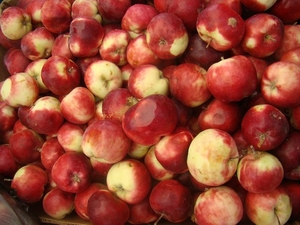Central Asia is considered to be the centre of origin and diversity for many globally important agricultural crops, particularly temperate fruit tree species. According to N. I. Vavilov, Central Asia is the region richest in specific and intraspecific diversity and belongs to one of the five most important centres of origin of cultivated plants (N. I. Vavilov, 1931). Despite the erosion of natural resources, there are still 8,100 plant species in the region, of which 890 species are endemic. About 400 of them are endangered and included in the list of endangered species “Red Book”.
Kazakhstan, Kyrgyzstan, Tajikistan, Turkmenistan and Uzbekistan are rich in highly variable domesticated crops with many landraces with unique characteristics. The main cultivated crops in the region are cereals (wheat, barley, rice, maize, sorghum, etc.) food legumes (bean, chickpea), vegetables (tomato, potato, onion, garlic, coriander, etc.), melons, industrial and stimulant crops (cotton, sugar beet, groundnut, sesame, tobacco). The major popular fruits are apple (Malus domestica), apricot (Armeniaca vulgaris), peach (Persica vulgaris), pear (Pyrus communis), plum (Prunus domestica), grape (Vitis vinifera), almond (Amygdalus communis), pistachio (Pistacia vera), pomegranate (Punica granatum), and fig (Ficus corica).
Many valuable landraces and old local cultivars of peach, quince, cherry, pomegranate, persimmon and others are still maintained in home gardens and on small farms.
Over the years, the native genetic diversity of fruit species has been eroded, mainly due to increased overgrazing, deforestation, logging and industrialization. To counter genetic erosion, Central Asian states have established about 15 forest reserves where wild fruit species are preserved in accordance with State legislation. In some of these reserves, due to recent socioeconomic changes caused by the breakdown of the Soviet Union, local people have had to overuse those fruits, leading to genetic erosion. Project Sites were selected so as to include some of these forest reserves in addition to on-farm sites and natural habitats where high intraspecific diversity and/or special forms were found.
The conservation of prevalent plant biodiversity in the region ensures the availability of valuable genetic stocks for plant breeders and researchers. This will not only result in the survival of these species and hence the protection of the natural resource base, but will also provide a solid basis for sustainable agricultural production in the region. The high diversity of cultivated plant species in the region is an international resource of global significance, as well as an essential component of improved crop production in the region, and a key element of farmer production strategies in the different countries.


